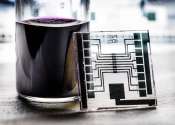Exploring the use of silicon microresonators for artificial neural networks
Researchers have made significant progress in the development of artificial neural networks using tiny silicon devices called microresonators, paving the way for faster and more energy-efficient artificial intelligence systems. ...
Feb 22, 2024
0
27









